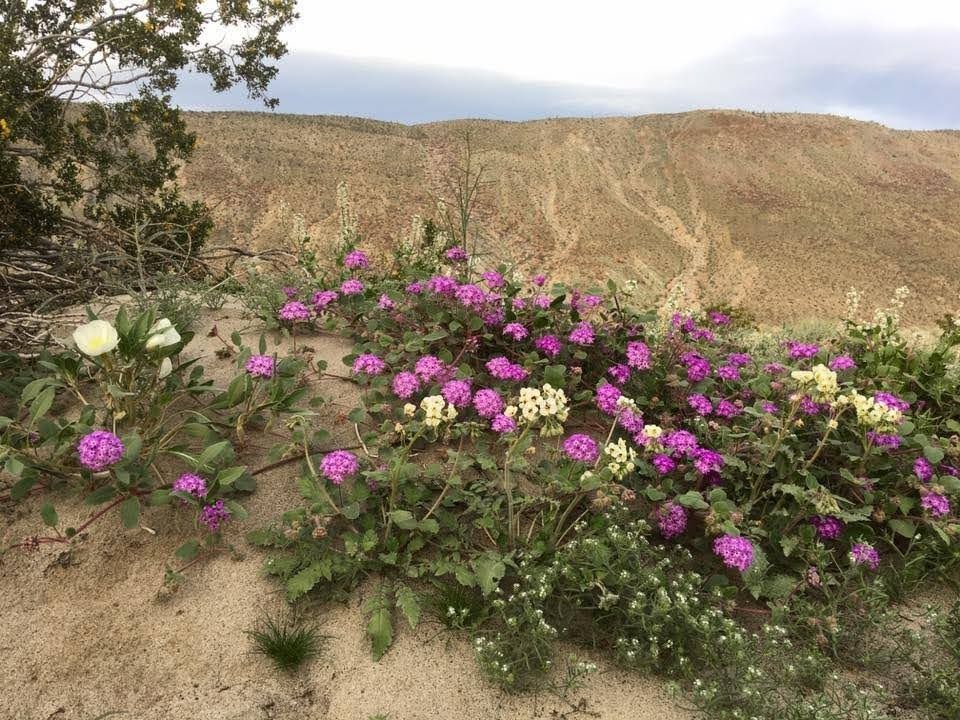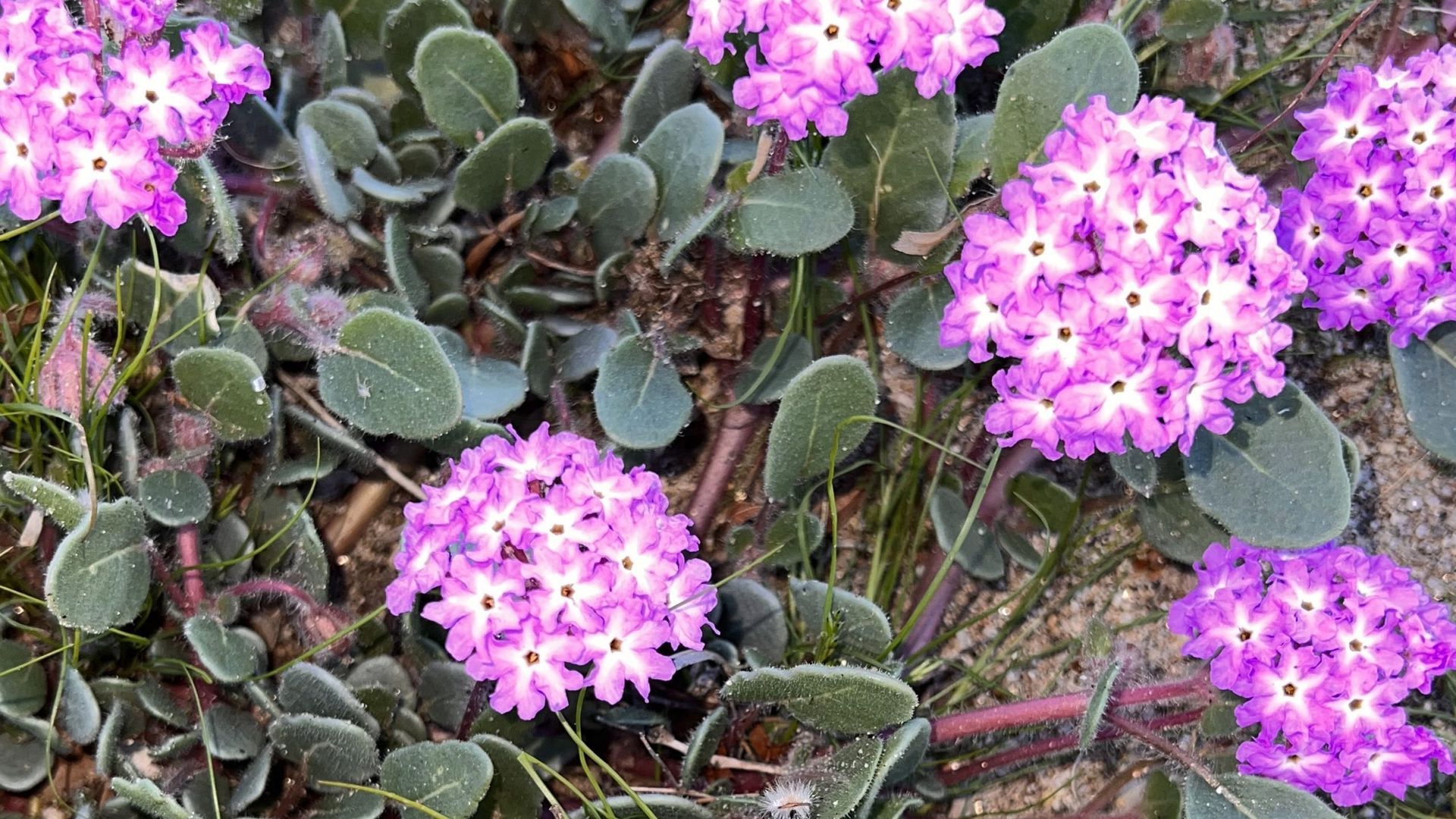The Conditions Needed for a Wildflower Bloom in Anza-Borrego
Share

Plan your visit to Anza-Borrego State Park in California and witness the stunning wildflower bloom. To fully appreciate this natural phenomenon, it’s important to understand the specific weather conditions and timing required for it to occur. Get familiar with the park’s unique desert ecosystem and the plants that call it home, including the adaptations they have developed to survive in the harsh environment.
Here is a list of conditions that are necessary for a successful wildflower bloom in the park:
- Rainfall: Adequate rainfall is the most critical factor in determining the success of a wildflower bloom. The park needs a sufficient amount of rain in the fall and winter to provide the necessary moisture for the seeds to germinate.
- Timing of the Rain: The timing of the rain is also important, as it needs to occur at the right time to promote germination.
- Temperatures: The temperature must be warm enough for the seeds to germinate but not too hot, as this can cause the seeds to dry out.
- Soil Conditions: The soil must be well-drained and have the right balance of nutrients to support the growth of wildflowers.
- Sunlight: The park needs adequate sunlight for the wildflowers to grow and thrive.
- Elevation : The elevation of the park can also play a role in the success of the wildflower bloom. Some wildflowers prefer higher elevations, while others prefer lower elevations.
- Competition from Other Plants: The presence of other plants and vegetation can also impact the success of the wildflower bloom. If the other plants are too aggressive, they can compete for resources and limit the growth of the wildflowers.
- Human Activity: Human activity, such as hiking, camping, and off-roading, can also impact the success of the wildflower bloom. These activities can cause damage to the soil and disrupt the delicate balance of conditions needed for the wildflowers to thrive.
In conclusion, a successful wildflower bloom in Anza-Borrego State Park requires a combination of favorable weather conditions, soil conditions, sunlight, and elevation, as well as minimal competition from other plants and minimal human impact. When all of these conditions are met, the park can transform into a sea of color and beauty, making it a truly magical and unforgettable experience for visitors.
However, it’s important to note that wildflower blooms can be unpredictable, and the timing and intensity of the bloom can vary from year to year. It’s always a good idea to check with the park or local authorities for updates on the wildflower conditions before planning a trip to the park. Regardless, the beauty of Anza-Borrego State Park is not limited to the wildflowers, and the park offers a wide range of recreational opportunities, stunning landscapes, and unique wildlife all year-round.
Rain and Sun: Factors Influencing Wildflower Bloom
The amount of rainfall and sunlight needed for a wildflower bloom to occur in Anza-Borrego State Park, California can vary from year to year and is influenced by many factors. Generally speaking, the park needs several consecutive rainy days followed by sunny weather to support the growth and flowering of wildflowers.
A substantial amount of rainfall, usually between 2 to 4 inches, is necessary for the seeds to germinate and for the plants to grow. The timing of the rainfall is also important, as it should occur in late fall or winter, when the ground is warm enough for the seeds to germinate but not yet hot enough to cause rapid evaporation of the moisture.
Sunlight is also an important factor for a wildflower bloom. The plants need adequate sunlight to photosynthesize and produce energy, but too much sun can cause the soil to dry out too quickly. A balance of sun and shade is ideal, and the park’s diverse topography provides many areas with different amounts of sunlight, making it a great place to see a wide range of wildflowers.
In summary, the amount of rainfall and sunlight needed for a wildflower bloom in Anza-Borrego State Park can vary greatly, but it typically requires several inches of rainfall followed by sunny weather. The timing and balance of these conditions, along with other factors such as soil type and temperature, play a significant role in determining the size and timing of a wildflower bloom in the park.
Soil Conditions Essential for Wildflower Growth in Anza-Borrego State Park
Soil conditions play a crucial role in the growth of wildflowers in Anza-Borrego State Park, California. For wildflowers to flourish, the soil must have the right balance of nutrients and be well-drained. Wildflowers require soil that is rich in organic matter and has adequate levels of nitrogen, phosphorus, and potassium to support healthy growth. The soil should also have good water-retention properties to provide the plants with the moisture they need to grow.
Well-drained soil is important to prevent waterlogging, which can cause root rot and other problems. The soil should allow excess water to drain away quickly after rain or irrigation, so that the roots of the plants can receive the oxygen they need to grow. The park’s diverse range of soils, from sandy washes to clay soils, provides a range of habitats for different species of wildflowers to thrive.
In conclusion, the soil conditions in Anza-Borrego State Park play a crucial role in the growth of wildflowers, and the park’s diverse range of soils provides many habitats for different species of wildflowers to thrive. A well-drained soil with the right balance of nutrients is essential for the growth of healthy and vibrant wildflowers in the park.
Sunlight: A Vital Element for Wildflower Growth in Anza-Borrego State Park

Adequate sunlight is crucial for the growth and survival of wildflowers in Anza-Borrego State Park, California. Sunlight provides the energy that wildflowers need to photosynthesize and produce food, which is essential for their growth and thriving. The amount of sunlight required varies based on the species of wildflower, with some requiring more sunlight than others.
Many wildflowers in the park grow in areas that receive full sun exposure, while others prefer more shaded areas. For example, the California Poppy requires at least six hours of sunlight a day to grow and bloom. It’s important to keep in mind that wildflowers typically bloom in areas with a suitable combination of sunlight, soil, water, and other environmental conditions. To get the best chance of seeing a vibrant wildflower display in Anza-Borrego State Park, be sure to explore sunny areas of the park during wildflower season.
The Role of Elevation in Wildflower Blooms in Anza-Borrego State Park
The elevation of Anza-Borrego State Park is also a crucial factor in determining the success of a wildflower bloom. Different species of wildflowers prefer different elevations, with some thriving at higher elevations and others preferring lower elevations. For example, the desert lily, a popular wildflower in the park, can be found at elevations ranging from sea level to over 5,000 feet. Other wildflowers like the Indian Paintbrush, prefer higher elevations, where they can receive more sunlight and cooler temperatures.
It’s important to note that the park’s elevation ranges from sea level to over 5,500 feet, providing a variety of habitats for different species of wildflowers to grow and thrive. When visiting the park during wildflower season, be sure to explore different elevations to see the full spectrum of wildflowers in bloom. Whether you’re hiking in the high desert or exploring the lower elevations, the diversity of the park’s wildflowers is sure to leave you in awe.
The Impact of Competition from Other Plants on Wildflower Blooms in Anza-Borrego State Park
In Anza-Borrego State Park, the presence of other plants and vegetation can play a significant role in the success of the wildflower bloom. If the other plants are too aggressive, they can compete for resources like sunlight, water, and nutrients, which can limit the growth of the wildflowers. One common example of an aggressive plant in the park is the invasive mustard weed, which can quickly take over and crowd out native wildflowers.
It’s important for park managers to keep an eye on the balance of vegetation in the park, to help ensure that the native wildflowers have the resources they need to flourish. By reducing the impact of invasive species and promoting a healthy and diverse ecosystem, park managers can help ensure that visitors to Anza-Borrego State Park can enjoy a vibrant wildflower display for years to come.
Impact of Human Activity on Wildflower Bloom in Anza-Borrego State Park
Human activity can have a significant impact on the success of the wildflower bloom in Anza-Borrego State Park. As more people visit the park, there is an increased risk of soil disruption, compaction, and erosion due to activities such as hiking, camping, and off-roading. This damage can negatively affect the delicate balance of conditions necessary for the wildflowers to thrive, including soil structure, moisture levels, and nutrient availability.
In addition to causing physical damage, human activity can also introduce new plant species, such as invasive weeds, into the park. These plants can quickly spread and outcompete the native wildflowers for resources, reducing the overall diversity and health of the park’s plant community.
It’s important for visitors to be mindful of their impact on the environment and to take steps to minimize their impact when visiting Anza-Borrego State Park. This may include staying on designated trails, avoiding trampling on delicate wildflowers, and properly disposing of waste to prevent the introduction of new plant species. By taking these precautions, we can help ensure the continued success of the wildflower bloom in Anza-Borrego State Park.
Understanding the Desert Ecosystem of Anza-Borrego State Park
To truly understand the conditions needed for a large flower bloom in Borrego Springs and Anza-Borrego State Park, it’s essential to understand this area’s desert ecosystem. The desert is characterized by its hot summers, mild winters, and low precipitation. Despite these harsh conditions, the desert is home to many plant species that have adapted to survive in this environment.
The desert ecosystem of Anza-Borrego State Park is a complex and diverse system that supports a wide range of plant and animal life. These species have evolved over time to cope with the challenges of living in a dry, hot environment with limited water resources.
One of the key adaptations of desert plants is their ability to conserve water. Many desert plants have deep roots that allow them to access water that is stored deep in the soil. Others have adapted by reducing the size of their leaves and/or closing their stomata during the day to reduce water loss through transpiration.
In addition to conserving water, desert plants have also developed other strategies for survival. Some plants, like cacti, have adapted by storing water in their stems, allowing them to survive for long periods without rainfall. Other plants, like wildflowers, have developed the ability to germinate quickly and grow rapidly after a rainfall event, taking advantage of the available water before it disappears.
The desert ecosystem of Anza-Borrego State Park is a testament to the resilience and adaptability of life in extreme environments. Understanding the conditions that support a wildflower bloom in the park helps to deepen our appreciation of this unique and beautiful ecosystem.
How To Be Prepared
- Check ABDNHA Wildflower Current updates and map website
- Join Borrego Blooms Facebook Group
- Like and Follow Anza Borrego Foundation Facebook page
- Sign up for ABF’s email updates to receive communication about the bloom.
- Check Anza-Borrego Desert State Park’s website for road conditions, safety tips, and best routes when traveling to the Park or call the Visitor Center at 760-767-4205.
- Call the Wildflower Hotline: (760) 767-4684
- Visit the State Park Store for free information, wildflower brochures, books, and all your safe needs for exploring the desert. (we consider this your BEST way to get the most up to date information and personable tips about visiting both Borrego Springs and Anza Borrego State Park) All purchases are considered a contribution.









